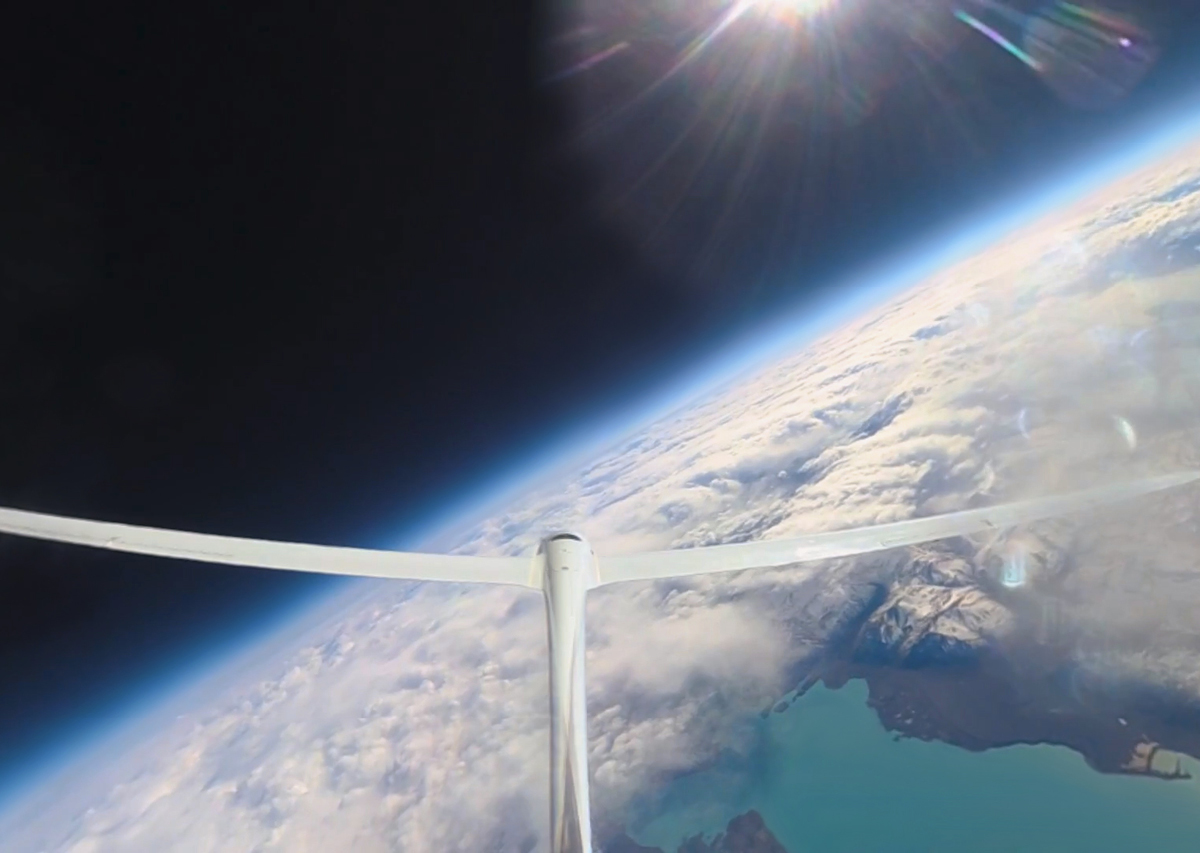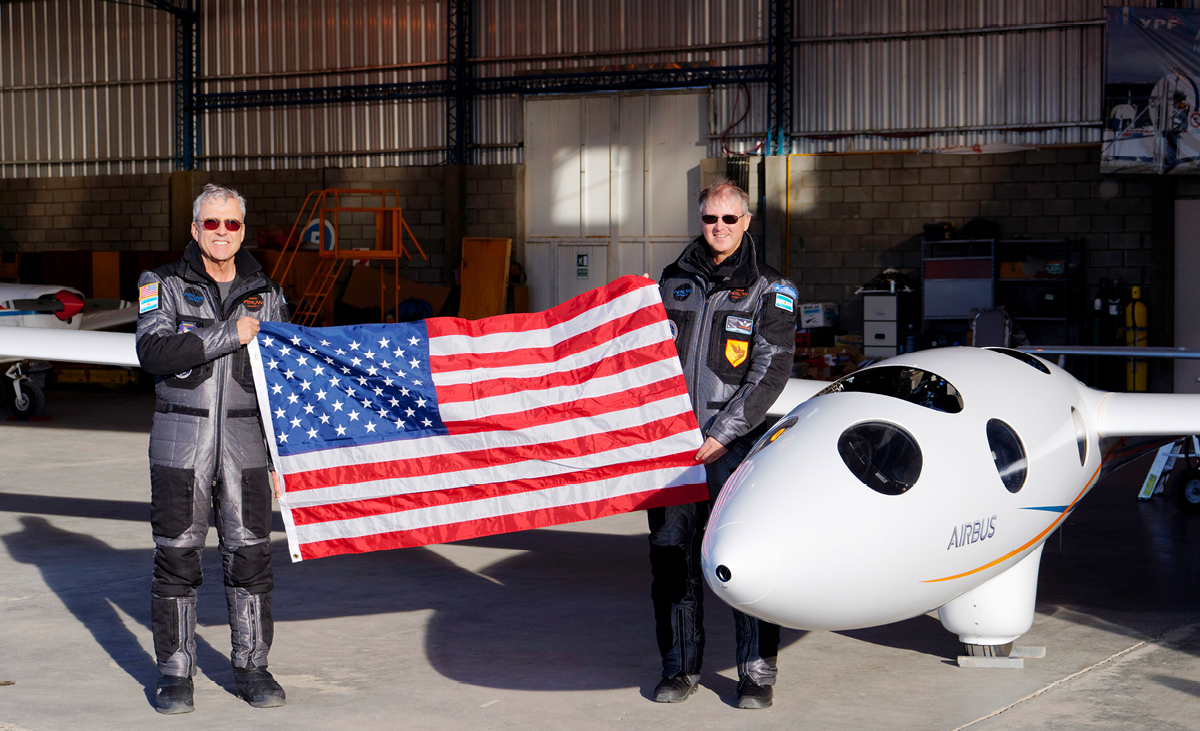Glidin’ High

Photos by Martin Heltai
Oh! I have slipped the surly bonds of earth, And danced the skies on laughter-silvered wings
On September 2, 2018, just a few short weeks ago, the Airbus Perlan Mission II aircraft broke a new flight record for gliders. With Jim Payne and Tim Gardner at the controls, the engineless glider climbed to a phenomenal height of 76,124 feet above sea level, or about 23.2 thousand meters (23202.595 to be precise, but what’s 2.595 meters amongst friends?). To put that in context, Mt. Everest is only 8,848 meters high while most commercial jets top out at 10,668 meters. Even the Concorde, which was specifically designed for high altitude flying, never really got higher than 13,716 meters.
And yet, here’s a winged aircraft, with no propulsion system of its own, sailing in a sky which, up until now has only been tamed by top secret military planes flown by astronaut rated pilots and bouncing up against the edge of space itself. The questions, when one hears these simple facts, come fast and furious. But understanding the “hows” and “whys” of the Perlan II’s mission, only paints part of the picture. Instead, to fully comprehend the importance of what is being done in the skies above Argentina, as we look to answer those questions, we must always ask ourselves the question the Perlan’s crew must always be answering: How high?
Sunward I’ve climbed, and joined the tumbling mirth
Of sun-split clouds, — and done a hundred things
In 1992, Einar Enevoldson, a NASA test pilot, discovered something fascinating, something which until that time had not only been unknown, but wasn’t even speculated about: Stratospheric Mountain Waves. Now, if we go back to our high school science class, we’ll remember that air is a gas and all gasses are fluids, which means nothing more than it flows. To make this a bit easier, think of air like a liquid, like water, and we can start to piece together what this means.
It means that as the air flows over high mountain ranges, like the Andes in South America, it acts like a large wave in the ocean, meeting an underwater obstruction and being pushed up to break the surface. In this case, though, the air pushes straight up with such force that it reaches away from earth’s atmosphere and heads towards space.
As a pilot, Enevoldson understood what this meant. If you had a glider to ride those air waves, they could push you all the way up, as close to actual space as you might be able to get outside of a prohibitively expensive rocket system. So he decided to prove his theory of these Stratospheric Mountain Waves was correct and, in the mid 90s, founded The Perlan Project.
You have not dreamed of — Wheeled and soared and swung High in the sunlit silence. Hov’ring there
Joining Enevoldson in that initial burst of energy which became the Perlan I were Steve Fossett and Dr. Elizabeth Austin. Fossett, a wealthy adventurer who was the first person to fly solo and non-stop around the world in a balloon as well as being a record setting pilot in his own right, not only came on board as a pilot, but in 1999, agreed to help finance the project. Meanwhile, Dr. Austin, who is an atmospheric physicist, not only provided confirmation of Enevoldson’s Stratospheric Mountain Wave theory, but, in 1998, she also expanded upon it, showing that “it is the stratospheric polar night jet and the polar vortex that are factors in sustaining these mountain waves allowing them to reach up to 130,000 feet (39,624 meters).”
However, it took another 7 years and the turning of the millennium to finally get the first incarnation of the Perlan into the air. With Enevoldson and Fossett at the controls, August 30, 2006 found them flying more than 500 meters higher than anyone had previously flown in a glider, breaking the record and topping out that flight at 15,460 meters. That aircraft, having served its purpose, now resides in a place of honor at the Seattle Museum of Flight, where it “will serve as the focal point for an exhibit, opening in April, on the science of soaring, the Perlan project and the many personal achievements of its two pilots.”
I’ve chased the shouting wind along, and flung My eager craft through footless halls of air...
Their success and excitement, however, was relatively short lived. Almost exactly one year later, September 3, 2007, Fossett’s plane disappeared somewhere over the Sierra Nevada Mountains, and his death, officially declared in February of 2008, was a huge blow for the Perlan team.
It would take several more years of waiting before Enevoldson could once again take to the air. Even though the basic design of Perlan II had been finalized and the fuselage had been completed, without Fossett, the funds were no longer available.
Four years ago, though, in a case of perfect corporate synergy, the European Aeronautic Defence and Space Company, while transitioning into Airbus SE and still remaining one of the world’s leading airplane manufacturers, realized Perlan would make for a great investment and PR coup. As Tom Enders, CEO of Airbus, explains, “Perlan Project is achieving the seemingly impossible, and our support for this endeavor sends a message…that we will not settle for being anything less than extraordinary.” So in July 2014, the Perlan Project gained a new financial partner and title sponsor, meaning the newly renamed Airbus Perlan Mission II was now back in business.
Up, up the long, delirious, burning blue I’ve topped the wind-swept heights with easy grace
With corporate funds in place, things started moving quickly. A new hangar was built at the Minden-Tahoe Municipal Airport near the team’s homebase in Minden, NV. The town, with an official population of 3001, is, according to the flight team, “the best possible and most logical location for a US-based team of aerospace pioneers to develop and test their high altitude experimental glider.” This is because the geographic positioning of Minden has placed it as “one of the biggest hot spots for the glider/soaring community in the US.” Its proximity to the Sierra Nevada mountains produces some of the best mountain waves for gliding in the northern hemisphere. Then again, it could also be that the Perlan Project’s chief pilot Jim Payne, as well as his wife Jackie, who happens to be the project’s operations manager, both already live there.
The hangar, named for space tourist and Airbus Perlan investor Dennis Tito, was officially opened in December of 2015, providing a custom home for the new iteration of the craft, this time sporting a pressurized cabin to allow for even higher flights.
The team were finally able to get their bird in the air in September of 2016. September being the perfect season to fly out of El Calafate, Argentina, “one of the few places on Earth where a combination of mountain winds and the polar vortex create the world’s highest ‘stratospheric mountain waves’ – rising air currents that Perlan pilots believe can eventually carry their experimental aircraft to the edge of space.”
In that first season, the glider reached new record heights, hitting a ceiling of 26,000 feet. Impressive, but still not good enough if they wanted to take down the record setting altitudes of such powered craft as the SR-71 Blackbird or U2 spyplane.
While Patagonia in August and September might be perfect for the ultimate goals, the Airbus Perlan team isn’t content to sit around and wait for it to come around once a year. In fact, back home in Nevada, in May of 2017, they once again broke their own record, soaring to just over 30,000 feet.
Where never lark or even eagle flew —
And, while with silent lifting mind I’ve trod
Breaking records, now, seemed to be part and parcel of the annual flight seasons. So far this year, as stated above, records are falling faster than ever before, with each new flight seemingly to push the boundaries of the aircraft’s capabilities further and further. Ed Warnock, Perlan Project CEO, after a successful flight in August said, “our victory today, and whatever other milestones we achieve this year, is a testament to a pioneering spirit of exploration that runs through everyone on the project.”
That spirit of exploration runs through the stated mission of the program, which, beyond the sheer enormity of “flying an engineless glider to the edge of space,” is to “open up a world of new discoveries related to high-altitude flight, climate change and space exploration.”
To this end, the glider was designed with scientific research in mind. Not having an engine, the Perlan II doesn’t affect temperature or chemistry in the surrounding air, making it ideal to “expand human knowledge on several fronts” including a deeper understanding of weather and climate change as well as being able to take untainted samples of the ozone layer. Even more exciting is that the conditions the Perlan II are being designed to fly in are close to those a winged craft might experience when flying above the Martian surface, feeding directly into NASA’s future plans to mount a manned trip to the red planet with the hopes of colonizing.
Airbus Perlan has also partnered with organizations like Teachers in Space, Inc., a non-profit designed to create student interest in the STEM fields of research to run student-designed experiments, leading to fostering the next generation of researchers who will take the aircraft higher and discover things we can only dream about today.
The high untrespassed sanctity of space, Put out my hand, and touched the face of God.
High Flight by John Gillespie Magee, Jr.

Pilots Jim Payne and Tim Gardner after the Airbus Perlan II’s 76,000 feet record flight.
